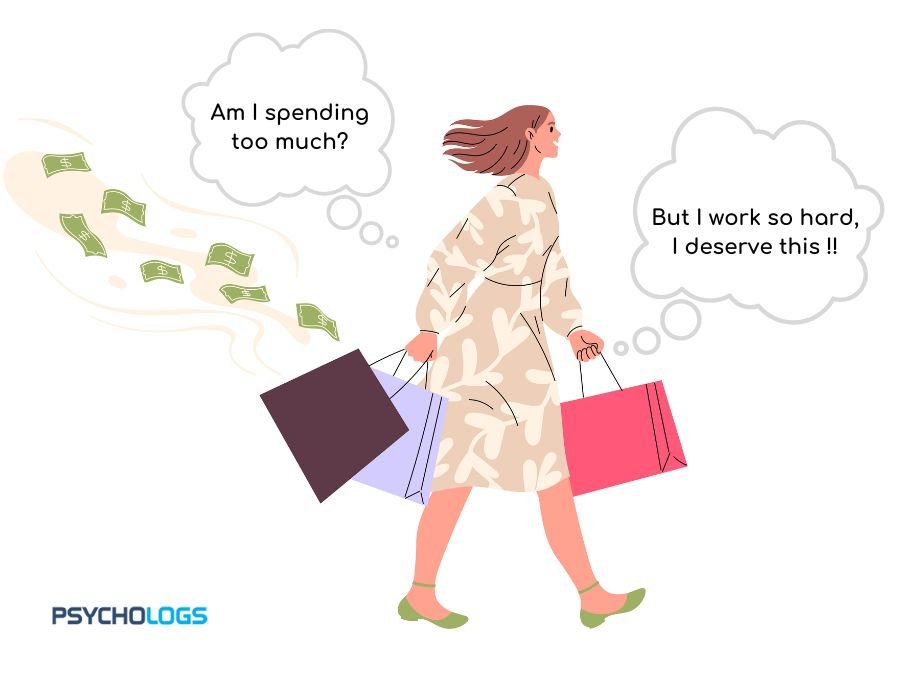Cognitive dissonance is the situation that arises due to the conflict between the thoughts, attitudes and behaviour of any individual. These conflicts produce a feeling of psychological and mental discomfort, which leads to an alteration in either the beliefs and attitudes or the behaviour to reduce discomfort and provide stability.
History of Cognitive Dissonance
Leon Festinger, an American psychologist, developed the concept of cognitive dissonance theory in the 1950s. This theory was the result of an experiment conducted by Leon Festinger and James M. Carlsmith about forced compliance.
They gave volunteers two offers to lie about a boring task being fun; either they got one dollar or twenty dollars for the same task. Those who were paid twenty dollars didn’t experience cognitive dissonance as the money they received justified their lying. But those who were paid only one dollar experienced cognitive dissonance as the amount of money couldn’t justify their lying. So, they altered their beliefs and started to believe that the task was really interesting.
This theory has been one of the most important theories in social psychology. It helped in the development of ideas and approaches about determinants of attitudes, consequences of decisions, and the importance of agreement of thoughts and behaviour within oneself.
Examples of Cognitive Dissonance:
- Everyone is aware of the dangerous consequences of smoking, but people justify smoking as a stress buster.
- We want to have good health, but are unable to do regular exercise and eat healthy food. Then, as a result of this conflict, we feel guilt.
- We always think about saving our money, but end up spending it on unnecessary things sometimes. Later, we regret our actions and console ourselves with the fun we had while making that unnecessary expenditure.
- We try to perform the tasks listed in our to-do list. And when we are unable to complete them all, we reduce the guilt by having satisfaction with the tasks that we completed.
Signs of Cognitive Dissonance
Cognitive dissonance theory applies to our everyday life. But we are not always able to identify and recognise it. Some of the most common signs that an individual may feel related to cognitive dissonance are the following:
- Feeling uneasy or uncomfortable before deciding on something.
- Having guilt or regret about the decisions and actions of the past.
- Having a feeling of embarrassment due to your decision or actions.
- Having an urge to justify or rationalise the reasons behind your certain actions.
- Doing things under social pressure, even if they conflict with our attitude and thinking.
Causes of Cognitive Dissonance
There are many scenarios and situations that may trigger the conflicts that lead to cognitive dissonance.
- Forced Compliance: Sometimes, we might perform such tasks or make such decisions that contradict our own beliefs and attitudes. It might be due to the expectations and pressure of work, society, friends or any other social situation.
- New Information: Sometimes accommodating a new piece of information can produce feelings of cognitive dissonance. For example, your friends telling you that sometimes lying to your parents is fine. But it may contradict your belief that you should always share things with your parents. So, to reduce the feeling of discomfort, you may find ways either to justify that new information or to ignore it.
- Decisions: We make plenty of decisions in our everyday lives. The decisions range from small to big, easy to hard, individual to group, etc. While making these decisions, we face many conflicts like approach-approach conflict (choosing between two dresses), approach-avoidance conflict (choosing between studying and chilling with friends), and avoidance-avoidance conflict (choosing between low-pay jobs and unemployment). All these conflicts lead to feelings of dissonance, which we have to reduce by justifying the choices we make.
Impact of Cognitive Dissonance
Cognitive dissonance leads to conflicts between our thoughts, attitudes and behaviour, which produce a variety of uneasy feelings and discomfort. So, how discomfort can manifest itself is the following:
- Anxiety
- Embarrassment
- Regret
- Sadness
- Shame
- Stress
- Embarrassment
Cognitive dissonance can also influence the self-concept people have about themselves. It also produces negative feelings of self-esteem and self-worth, which is not healthy for any individual’s mental peace and stability.
How to reduce it
Dissonance can be reduced in the following ways:
- Changing existing beliefs: Changing the existing belief or attitude helps an individual justify their behaviour and try to maintain a constant relationship between the two components. Changing the behaviour component can be quite challenging for individuals, so usually, people alter their beliefs. For example, Parents try to reduce the screen time of their children. But it becomes difficult when it comes to applying the same thing to their behaviour. Then, parents are usually seen justifying their behaviour based on their experiences.
- Adding new beliefs: Adding new beliefs reduces the dissonant beliefs and thereby simplifies our actions and behaviours. For example, we may add a new belief about climate change that an individual’s contribution is more important than another’s negligent behaviour or that an individual’s contribution wouldn’t be able to overpower other negligent behaviour.
- Reducing the importance of beliefs: One of the most common ways to reduce dissonance is by increasing the importance of the decision that you made and decreasing the importance of the alternative decision that you rejected. For example, you had junk food at a party. So, you can increase the importance of having that junk food once in a while and decrease the importance of the consequences of an unhealthy diet, as you might balance it by exercising more or doing anything.
Application of Cognitive Dissonance Theory
Cognitive dissonance theory can be applied in various fields and domains as follows:


In marketing, salespeople often use strategies and techniques that induce cognitive dissonance to persuade their consumers to make a purchase. For example, they overemphasise the benefits of their product and try to reduce the guilt of consumers for making expensive purchases.
In education, cognitive dissonance plays a really important role in encouraging and motivating students. It helps challenge student to alter their self-beliefs about their capabilities and expectations. It also enforces critical thinking and deep learning, improving their performance.
In therapy, cognitive dissonance theory helps clients understand and evaluate the inconsistencies between their thoughts and actions. It’s an important part of therapy because understanding the problem and its possible causes facilitates the solution-finding approach too. Thereby, helping the client to achieve psychological well-being.
Cognitive dissonance theory has a wide application, explaining that we usually try to maintain consistency between our attitudes, thoughts and behaviour to possibly minimise the chances of feeling mental discomfort. It also explains the ways that we usually unknowingly adopt in our everyday lives if we’re unable to maintain this consistency. However, there is an issue with a scientific temperament because this theory can’t be observed physically, as it’s more about subjective experiences. Therefore, we can’t measure it objectively.
Criticism of Cognitive Dissonance Theory:
- It assumes that people make rational strategies for reducing dissonance, but it is something that happens unintentionally and unconsciously.
- It ignores individual capacity for tolerating inconsistencies, as not all people share dissonance in the same way.
- It doesn’t account for the social and cultural influences in shaping dissonance and strategies for reducing the conflict.
- It mainly focuses on the cognitive change as a result of the dissonance, but not the behavioural shifts that may result from inconsistency.
- It can’t be measured objectively as it can’t be observed physically. So, it doesn’t hold a scientific temperament.
FAQ’s:
1. What is cognitive dissonance?
Cognitive dissonance is the situation of discomfort that arises due to the conflict between the thoughts, attitudes and behaviour of any individual. E.g. everyone is aware of the dangerous consequences of smoking, but people justify smoking as a stress buster
2. How does Cognitive Dissonance affect our behaviour?
It can lead to the feeling of discomfort and uneasiness, which motivates us to reduce the dissonance with the help of certain ways and strategies. E.g. we try to perform the tasks listed in our to-do list. And when we are unable to complete them all, we reduce the guilt by having satisfaction with the tasks that we completed.
3. When is Cognitive Dissonance more likely to occur?
It is more likely to occur when our thoughts and beliefs are really important to us and our behaviour does not match with them, producing huge conflicts for ourselves that are not that easy to resolve. E.g. for some people, one of their principles is being honest. So, it becomes really difficult for such people to make a decision excluding honesty.
4. Is there anything positive about cognitive dissonance theory?
Yes, it holds a positive attitude towards motivating and challenging us to alter our beliefs about certain behaviours. E.g. in academics, it helps us challenge our capabilities and perform well.
References +
- Mcleod, S., PhD. (2023). What is cognitive dissonance Theory? Simply Psychology. https://www.simplypsychology.org/cognitive-dissonance.html
- Suls, J. (2024, May 7). Leon Festinger | Biography & Facts. Encyclopedia Britannica. https://www.britannica.com/biography/Leon-Festinger/Cognitive-dissonance
- MSEd, K. C. (2022, November 7). Cognitive dissonance and the discomfort of holding conflicting beliefs. Verywell Mind. https://www.verywellmind.com/what-is-cognitive-dissonance-2795012
- Harmon-Jones, E., & Mills, J. (2019). An introduction to cognitive dissonance theory and an overview of current perspectives on the theory. In American Psychological Association eBooks (pp. 3–24). https://doi.org/10.1037/0000135-001







Leave feedback about this